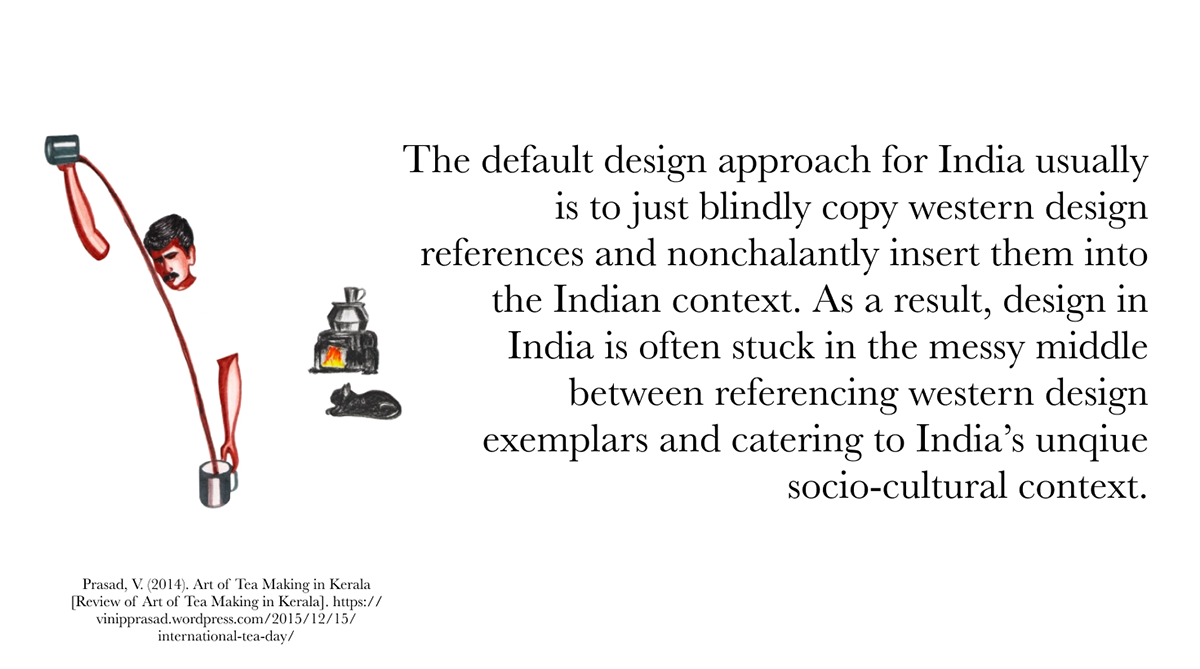


Experiment One - What is Indian Design Aesthetic?
India, being an incredibly diverse country holds a multifaceted definition of the Indian design aesthetic that varies among individuals and across regions. To gain a deeper understanding, I reached out to my friends back home and asked them about their perceptions of Indian design.

One friend expressed that, to them, design encapsulates the amalgamation of India’s historical past, drawing from influences such as the architecture of Mughal forts, colonial impacts from British rule, and the distinct imprint of Portuguese influence in places like Goa. The diversity in design becomes palpable as one travels across the country, with each region reflecting unique elements.Taking a regional perspective, another friend highlighted Punjab and associated it with Phulkari that is form of textile, noting that it could be considered a form of graphic design due to its intricate patterns featuring elements like peacocks. So for them, design in India is closely intertwined with fashion. Venturing into rural areas, they pointed out the handprinted advertisements characterised by vibrant colours, diverse graphics, and bold typography as quintessential examples of Indian graphic design.
From yet another perspective, design was seen through a classical lens, evoking a sense of nostalgia and an old-school vibe. The preference leaned towards complicated designs, rejecting minimalism in favour of rich detailing where each glance reveals a new layer of complexity. In essence, these diverse viewpoints helped me understand what the term “Indian Design” encompasses, resonating with the myriad influences and individual experiences that shape the same.


Experiment Two - Nostalgia
After gaining insights into the Indian design aesthetic through the initial experiment, my focus shifted towards exploring how to evoke
a sense of nostalgia among the South Asian diaspora. Nostalgia is a sentimental longing or wistful affection for a period in the past. Specifically targeting Millennials and Gen Z South Asians, I did a brainstorm to identify elements that could evoke a nostalgic response. In the brainstorm, I took point of certain experiences ranging from Parle-G biscuits that were a staple during childhood to the refreshing mango drink Maaza that was was advertised on television with famous actors.
a sense of nostalgia among the South Asian diaspora. Nostalgia is a sentimental longing or wistful affection for a period in the past. Specifically targeting Millennials and Gen Z South Asians, I did a brainstorm to identify elements that could evoke a nostalgic response. In the brainstorm, I took point of certain experiences ranging from Parle-G biscuits that were a staple during childhood to the refreshing mango drink Maaza that was was advertised on television with famous actors.



Experiment Three - Understanding Truck Art
Having gained insights into the elements that evoke a sense of nostalgia, I started researching about Truck Art in India. Trucks in India serve not only as utilitarian vehicles for transporting goods but also as canvases for artistic expression. They showcase intricate designs like the majestic golden-crested eagles that signify not only speed but also the profound sentiment that, no matter how far these birds soar, their watchful eye remains directed towards their home. The handiwork on these trucks extends beyond mere aesthetics, it embodies the emotions, aspirations, faiths, and cultural roots of the drivers. For this experiment, I tried to understand Indian Truck art, exploring its history, and attempting to reimagine certain designs with a specific emphasis on incorporating Indian words that evoke a sense of nostalgia. The intention was to create these designs with cultural and linguistic elements that resonate with the emotions and memories associated with the South Asian experience. By experimenting with a couple of designs and understanding the use of vibrant colours, patterns and designs like using dome shaped structure similar to that in Indian Temples, I aimed to capture the essence of truck art’s storytelling tradition. The incorporation of Indian words added an additional layer, creating a fusion of linguistic and visual elements.


Experiment Four - Creating Illustrations
Following the testing phase and gathering feedback on the nostalgia sketches, I decided
to focus on the four most resonant things from the lot. My goal was to craft illustrations that created a nostalgic vibe. I decided the create the illustrations in the form of stickers. Stickers can be an effective and engaging way to connect with Generation Z (Gen Z), a demographicknown for its digital savviness and preference for visual communication.
to focus on the four most resonant things from the lot. My goal was to craft illustrations that created a nostalgic vibe. I decided the create the illustrations in the form of stickers. Stickers can be an effective and engaging way to connect with Generation Z (Gen Z), a demographicknown for its digital savviness and preference for visual communication.














